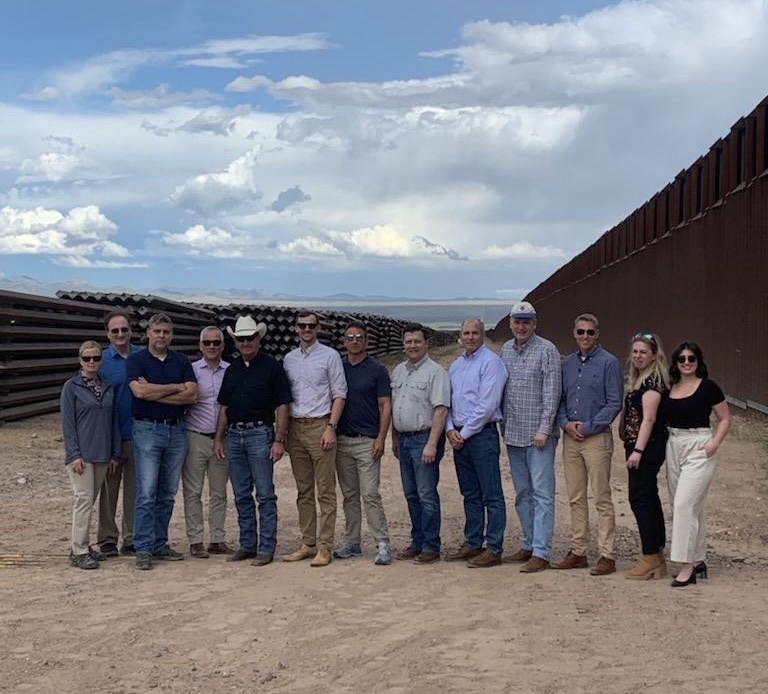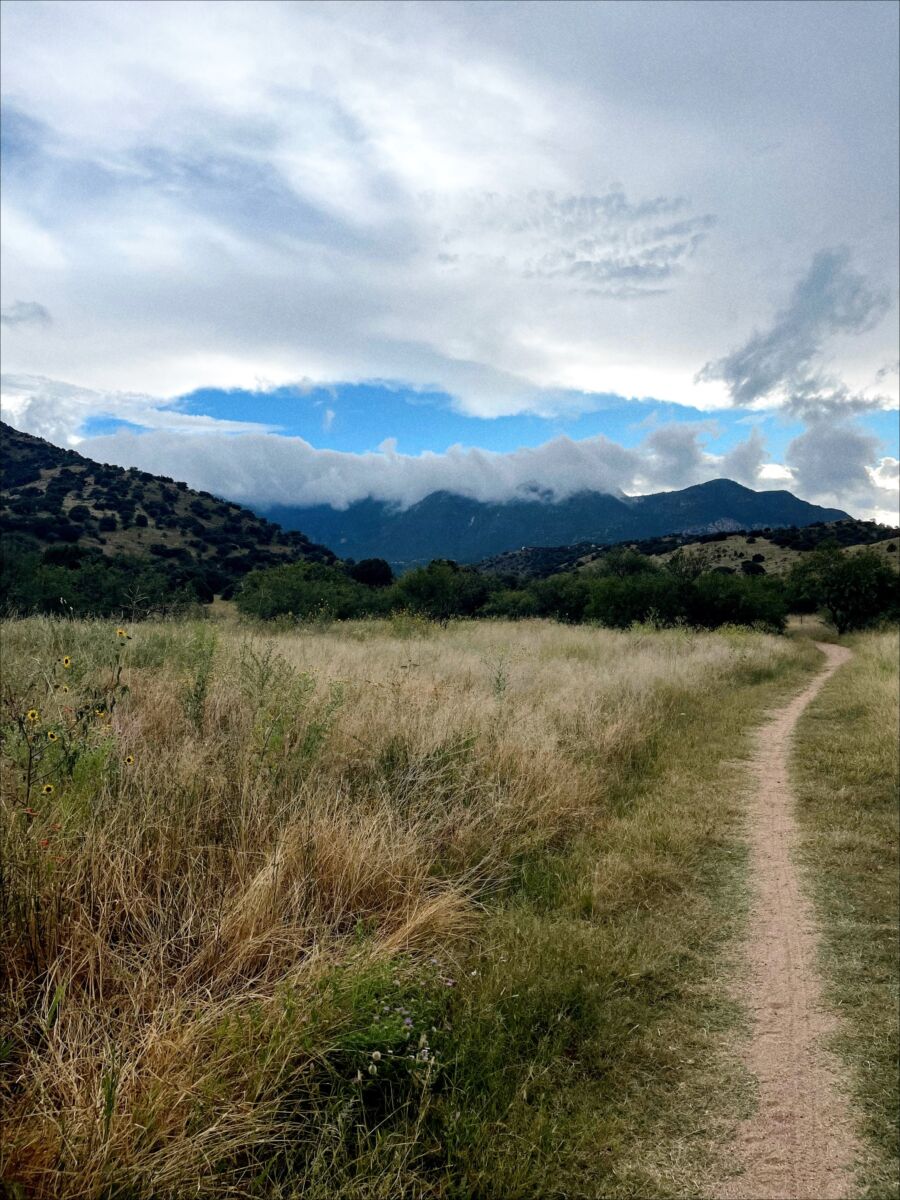 “One step—that’s all it would take to be in Mexico right now,” I thought as I stared through an open gate of the Arizona border wall, and seemingly into a different world.
“One step—that’s all it would take to be in Mexico right now,” I thought as I stared through an open gate of the Arizona border wall, and seemingly into a different world.
Cochise County is a stunning 6,300 square miles with 83 miles of border backed up against Mexico. The mountains are rocky and beautiful, the towns are small and quiet, and the locals are kind and hospitable. It speaks to the unique spirit of small-town America. It has also been dealt a hand it wasn’t prepared for, but local law enforcement has stepped up to the plate.
I’m just the social media girl. I’m no policy expert, I don’t have my masters or doctorate, the last time I conducted any original research was for influencer marketing. But my time in Cochise County, speaking to local law enforcement and natives, and seeing the border wall myself, has helped me realize you don’t have to be an expert to recognize a deadly fact… our southern border is dangerously open.
Day 1 in Cochise County: We kicked off our Border Security Coalition trip in a conference room filled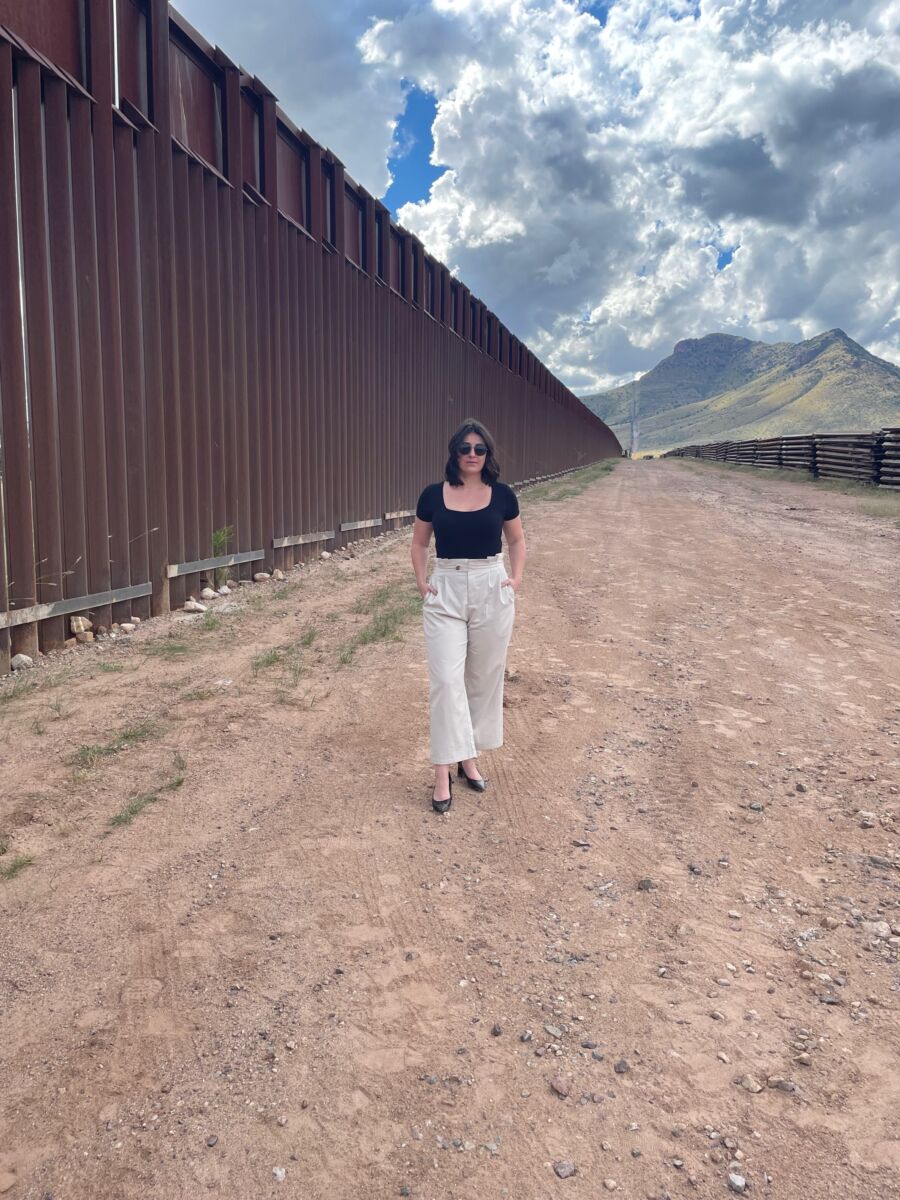 with local law enforcement and Sheriff’s departments from 17 different states. Brave men and women who have had to step up when the Biden administration forced the Border Patrol to stand down. When I looked around the room, I saw the faces of husbands and wives, daughters and sons, mothers and fathers, brothers and sisters, who are beaten down, desperately trying to be heard. They are tired, and yet they show up every day to protect their counties.
with local law enforcement and Sheriff’s departments from 17 different states. Brave men and women who have had to step up when the Biden administration forced the Border Patrol to stand down. When I looked around the room, I saw the faces of husbands and wives, daughters and sons, mothers and fathers, brothers and sisters, who are beaten down, desperately trying to be heard. They are tired, and yet they show up every day to protect their counties.
And they aren’t just protecting their territory. They are protecting all of us. As I’ve come to understand by shadowing the Cochise County Sheriff’s department for two days, they are increasingly the first line of defense at the U.S. border. These small towns are not the final destination for most migrants. I learned that the migrants who are crossing to work will stay in towns and cities across America. But others cross to do harm—to carry drugs, including the deadly fentanyl, weapons, and victims of human trafficking. And because the border is so porous, every town is a border town now. The danger is real.
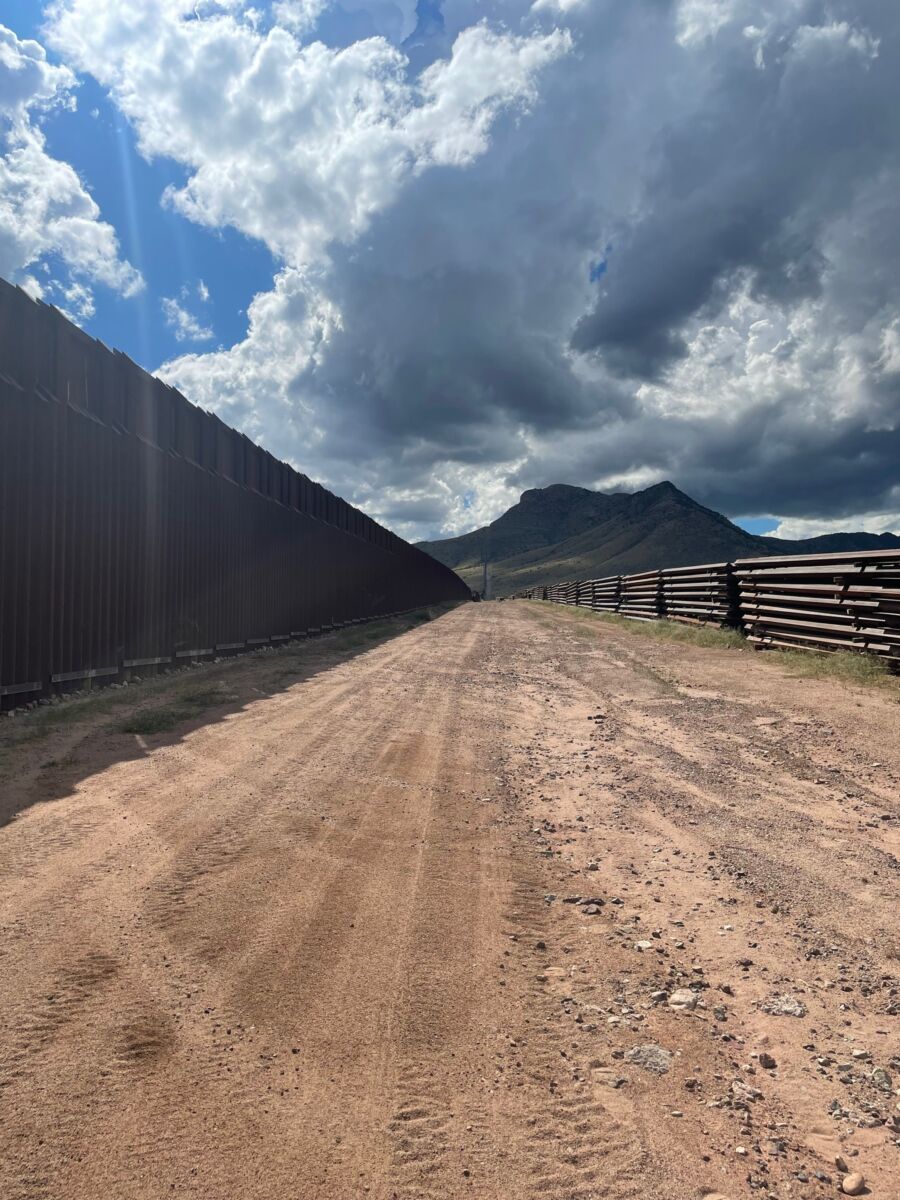 The Cochise County sheriff’s department drove us up to the border wall. The subject of so much division in our country was staring right down at me, but so was someone else. A cartel lookout station, manned 24/7 for the last 10 years, was eyeing every move we made as a group, no doubt phoning in our activity to coyotes on either side of the wall.
The Cochise County sheriff’s department drove us up to the border wall. The subject of so much division in our country was staring right down at me, but so was someone else. A cartel lookout station, manned 24/7 for the last 10 years, was eyeing every move we made as a group, no doubt phoning in our activity to coyotes on either side of the wall.
Just behind me, laying abandoned in the scrubland, were miles and miles of unused panels for the border wall—paid for by our taxes, but rotting away.
Our group noticed used water bottles scattered in the brush, discarded carpet shoes that every migrant is given to cover their tracks in the dirt, and we notice dates written in chalk on almost every pillar of the wall. We come to learn that each date is a marker for re-welding where the metal had been cut from below where cameras can track movement. By cutting the bottom of a metal pillar, coyotes can move it over 10-12 inches for migrants to slip through. These markings go on for miles.
The landscape is no stranger to heavy rain; monsoon season causes the border wall to dam up without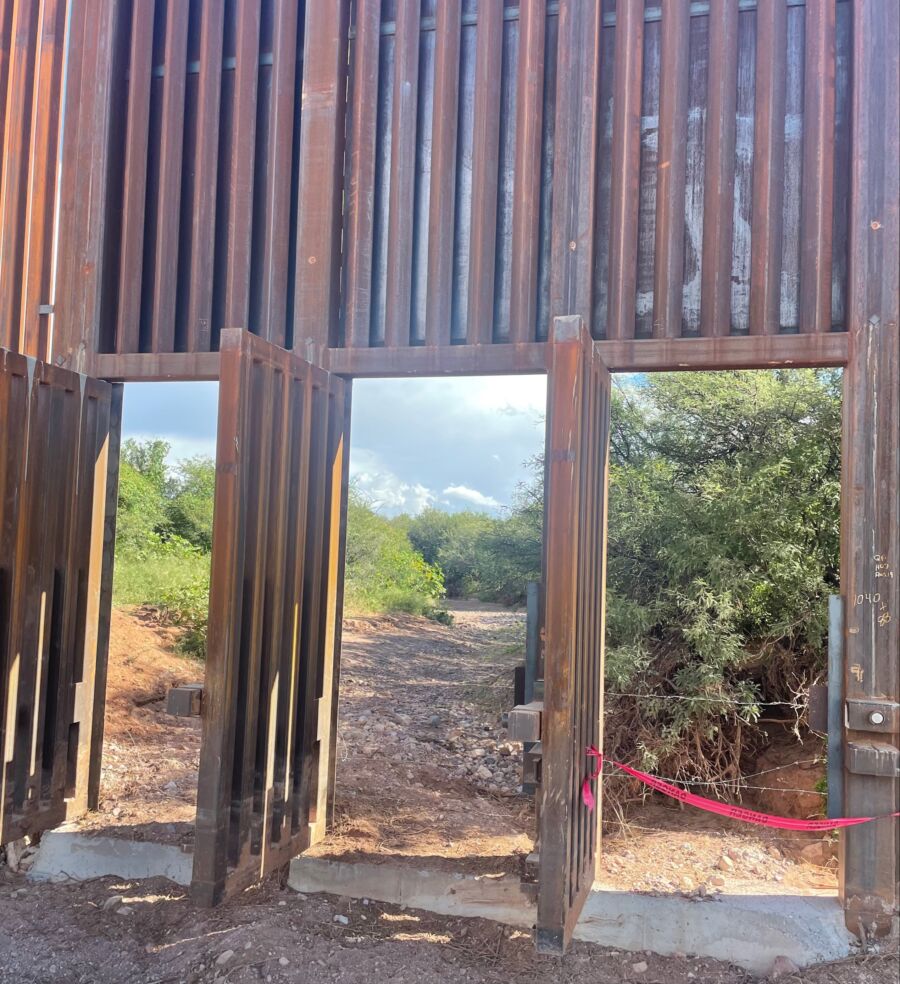 openings. When the downpour begins, heavy metal gates are opened for the free flowing of water. Here’s the kicker: they don’t close for months. And there is no security watching these openings.
openings. When the downpour begins, heavy metal gates are opened for the free flowing of water. Here’s the kicker: they don’t close for months. And there is no security watching these openings.
Day 2 in Cochise County: Our day began at the Sheriff’s Office, in a roundtable where we heard about local law enforcement’s experiences and statistical findings based on the last few years. Record breaking spikes in crossings, apprehensions, got-aways, drugs, and violence. But what caught me off guard were the individual stories told.
Stories of 12-year-old migrant girls crossing the border with the “morning after pill” because there was a 100% chance she would be raped during her travels. Local kids as young as 14, recruited through social media apps, stealing their parents’ cars to drive migrants for the cartel. There have been car accidents and fatalities caused by these teenagers because their directions from the cartel are to run from law enforcement. A mother was killed in one of these accidents while her teenage son waited at a restaurant for her to celebrate her birthday. There are military-aged men crossing in camouflage. It’s not just the women and children that the leftist media likes to focus on.
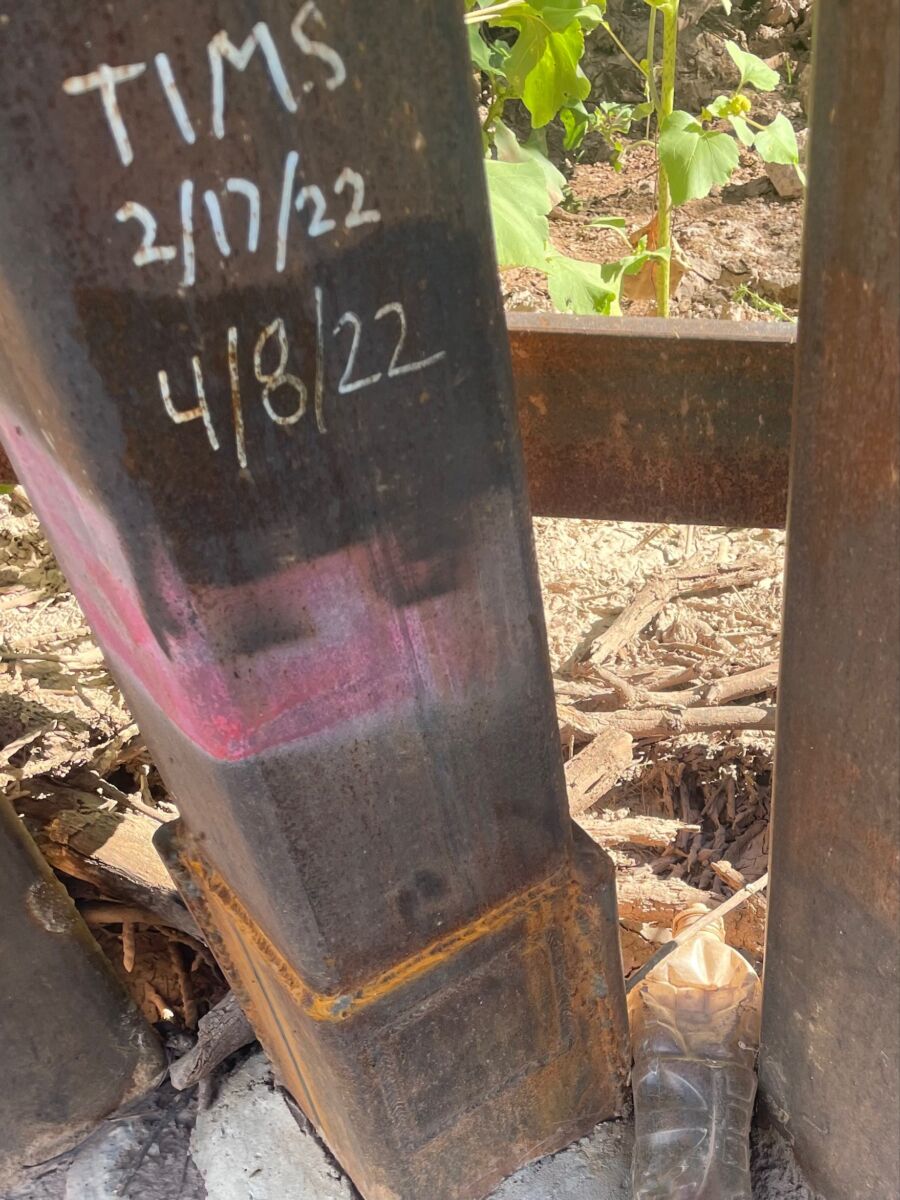 As a conservative, I am disgusted by the policies that have brought this crisis about. As a human being, I am heartbroken and distraught for every single person involved in this mess at our border—law enforcement, citizens, and migrants alike.
As a conservative, I am disgusted by the policies that have brought this crisis about. As a human being, I am heartbroken and distraught for every single person involved in this mess at our border—law enforcement, citizens, and migrants alike.
We then traveled with the Sheriff’s department up the mountains to Montezuma pass, where several migrant hotspots were pointed out to us along the way. At the very top is the beginning of the Arizona trail leading to Utah. Over one side of the mountain, you can see the border wall that we had visited the day before. On the other side, you see only valley. There is no wall. No fence. No line. You can’t tell where Arizona ends and Mexico begins.
That is the reality of our Southern border. Dangerously open, deadly, and only getting worse with every passing day.
I knew this trip would be eye opening and emotional, what I didn’t expect was walking away with a feeling of being indebted to the brave men and women in local law enforcement of Cochise County—how their bravery, sacrifice, creativity, and tenacity keep me and those I love safe from miles and miles away. An open border means that every town is a border town, but the Cochise County Sheriff’s Department and every border county like it is working tirelessly to ensure that our entire nation is safer.
To Cochise County law enforcement, thank you. We owe you a debt we can never repay.
